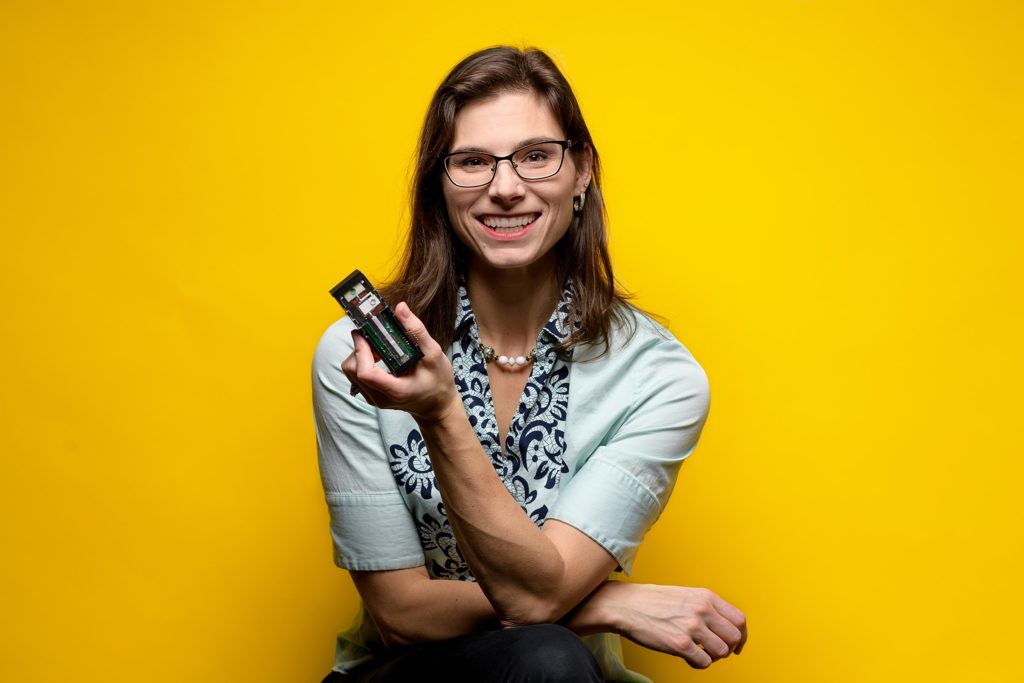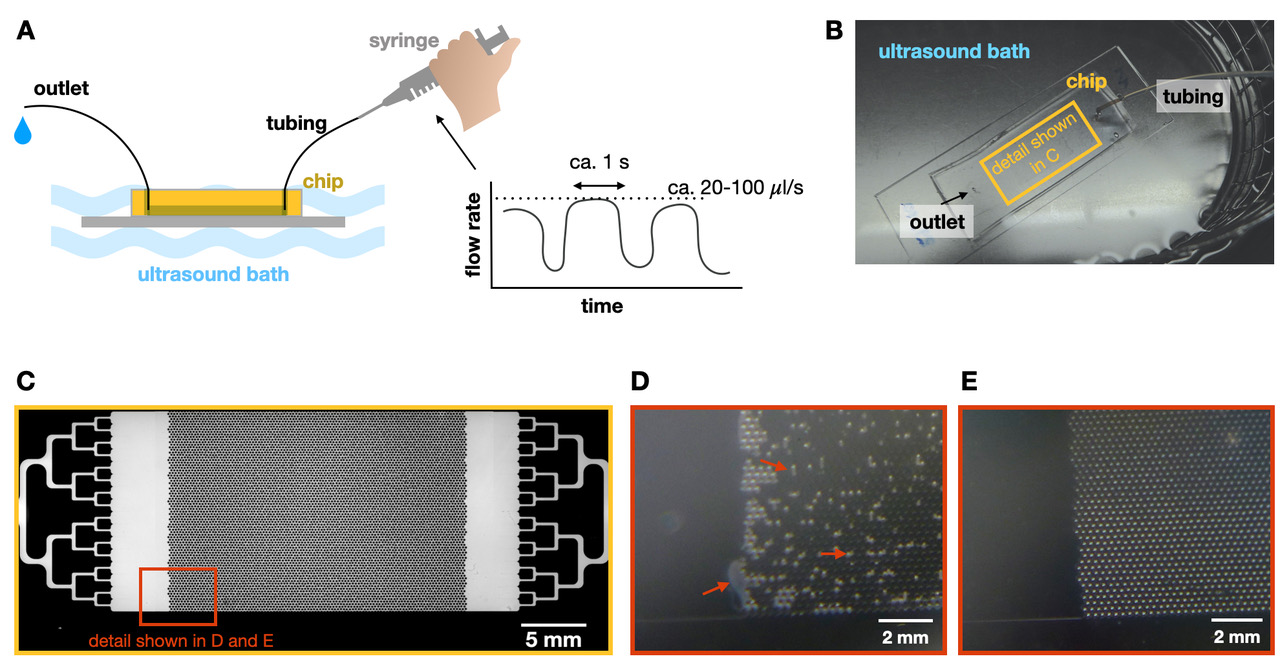Dr. Jacqueline Linnes is an Assistant Professor in the Weldon School of Biomedical Engineering at Purdue University. She received her B.S. in Engineering from the Purdue University and Ph.D. in Biongineering from the University of Washington. She was a Fogarty Postdoctoral Fellow at the Division of Global Health Equity within Brigham and Women’s Hospital/Harvard Medical School and continued her postdoctoral training at Boston University in Biomedical Engineering. She has received numerous awards including the Mandela Fellows Global Innovation Challenge Award (2017), Fast Company’s World Changing Ideas Finalist (2018), and Marta E. Gross Assistant Professorship of Biomedical Engineering (2018).
Dr. Linnes’s research lab develops real-time detection technologies to prevent, diagnose, and better understand the pathogenesis of diseases. This work emphasizes the translation of fundamental microfluidics and biological assays into point-of-care diagnostics using human-centered design principles. Her extensive experience in translational research includes co-founding and managing early-stage field-testing and user feedback for two startup companies. She has co-developed point-of-care health diagnostics, wearable devices, and water purification technologies for use in the US, Bolivia, Nicaragua, Kenya, Zambia, and Haiti.
Read Dr Linnes’s Emerging Investigator article “Microfluidic Rapid and Autonomous Analytical Device (microRAAD) to Detect HIV from Whole Blood Samples” and find out more about her in the interview below.
Your recent Emerging Investigator Series paper focuses on detecting HIV using a microRAAD. How has your research evolved from your first article to this most recent article?
As a PhD student, I published on the causes of bacterial adhesion to proteins adsorbed to medical devices (in 2012). These infections are incredibly difficult to detect and I found that I didn’t want to just study the causes of infections but to develop the diagnostic tools themselves. I now use the molecular biology and surface analysis skills that I developed in my PhD to create point-of-care diagnostic devices in my own lab. A critical shift in my thinking came when I realized that both the technical skills and the problem solving mindset that I learned in my PhD research were transferable to entirely different fields. In my two postdocs, I worked on Global Health projects ranging from infection control to point-of-care diagnostic devices. Now in my own research lab, we focus on developing, integrating and automating real-time detection technologies including point-of-care diagnostics and wearable devices, to meet the needs of underserved populations. This article is an example of a sample-to-answer test we developed to automate molecular detection of a pathogen (HIV) from whole blood sample at the point-of-care.
What aspect of your work are you most excited about at the moment?
I started my lab in 2015 with the vision that we could automate molecular detection in point-of-care diagnostics, so that the dvices could be used by anyone, anywhere in the world. I love that we have pulled together individuals with expertise in so many different fields from materials science, to electrical engineering, to molecular biology in order to make this technology work. A huge contingent of my lab and Dr. Stanciu’s lab, and at all levels, from undergraduate researchers to PhD’s have contributed to this project. Now we are bringing in more expertise in translational clinical research. I am currently in Kenya and just handed over a batch of these microRAADs to my colleague, Dr. Eddy Odari at Jomo Kenyatta University of Agriculture and Technology. Dr. Odari will be testing the MicroRAADs using real patient samples and I can’t wait to find out the results.
In your opinion, what is the biggest advantage to using your microRAAD compared to other methods of detecting HIV?
I know there’s still a ways to go, but I believe that the microRAAD platform will ultimately bridge the gap between laboratory-based molecular detection instruments and truly point-of-care diagnosis of HIV in the field.
What do you find most challenging about your research?
Designing technologies sample-to-answer molecular diagnostics that are both highly sensitive and remain robust and accessible to the clinicians, technicians, and patients who need them is incredibly challenging. In my lab, we find it critical to test out our ideas and prototypes via formal and informal usability studies to understand what can be done practically in the field settings that they are designed for. We redesign anything that isn’t actually usable in the real world.
At which upcoming conferences or events may our readers meet you?
I am at the 4th Africa International Biotechnology and Biomedical Conference in Nairobi and Mombasa, Kenya, and this October I will be attending the 2019 Biomedical Engineering Society Annual Meeting in Philadelphia, USA, and the 2019 MicroTAS conference in Basel, Switzerland.
How do you spend your spare time?
I have a 5 year old and a 3 year old so “spare time” is perhaps an overstatement, but we spend a lot of time outdoors at parks and playgrounds and my husband and I built a tree house in our backyard this summer.
Which profession would you choose if you were not a scientist?
That’s a tough one. I love my job as a biomedical engineering faculty member. I do think it would be fantastic to work at a science museum developing and building exhibits and outreach activities.
Can you share one piece of career-related advice or wisdom with other early career scientists?
Don’t underestimate the power that people play in your research. Play well with others, find a place that supports you in your efforts, seek out excellent employees and mentees, and make sure to invest in their development and in your own. Whenever possible, work directly with the people that you ultimately want to use your technology. It is both incredibly motivating and absolutely critical to making an impact that reaches beyond the confines of your own lab.

Dr Jacqueline Linnes (Picture credit: Purdue University photo/Rebecca Wilcox)












